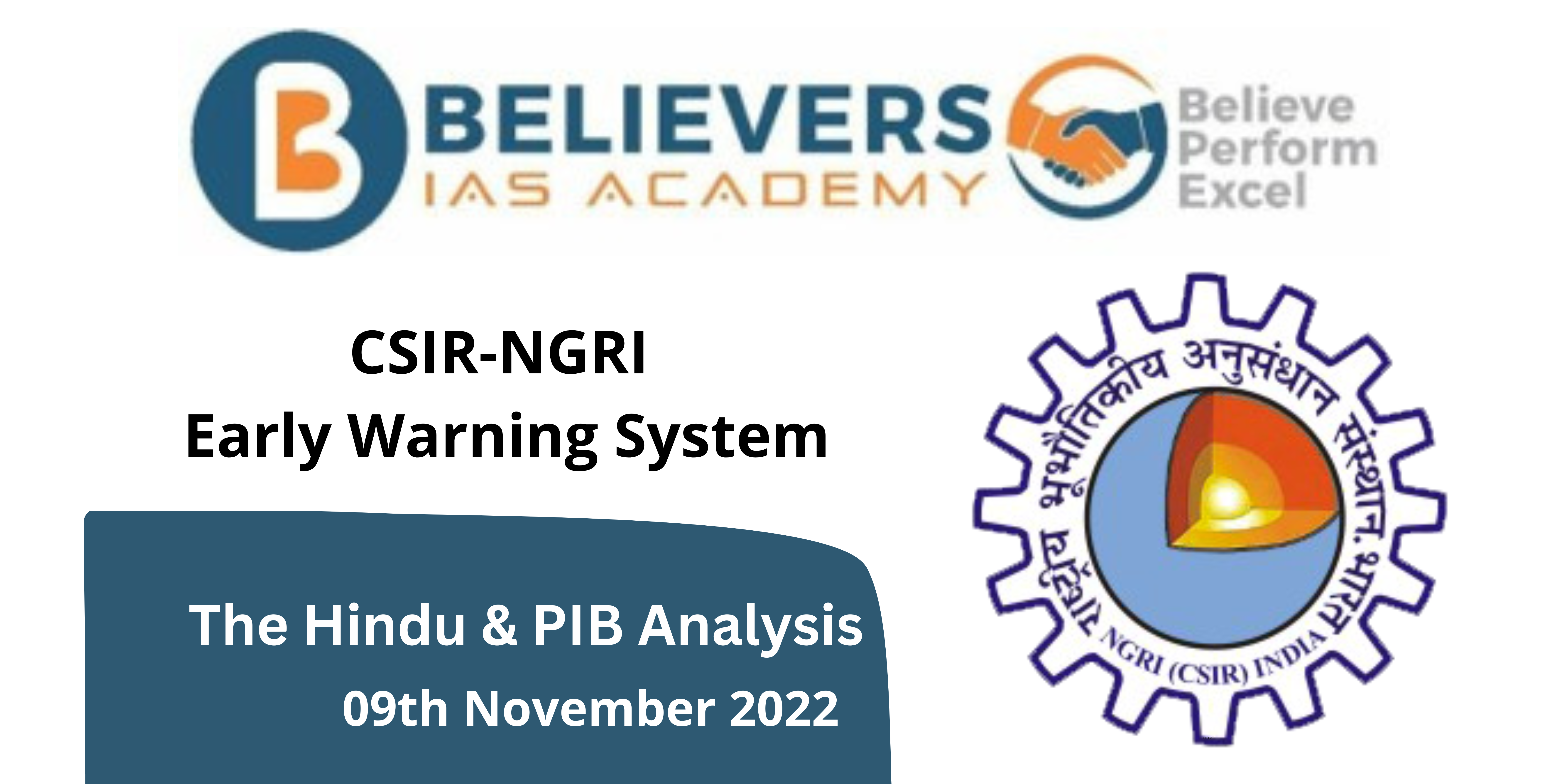CSIR-NGRI Early Warning System
#GS-03 Science and Technology
For Prelims:
About CSIR-NGRI:
- The National Geophysical Research Institute (NGRI) of the Council of Scientific and Industrial Research is a constituent research laboratory of the Council of Scientific and Industrial Research (CSIR) established in 1961.
- Its mission is to carry out research in multidisciplinary areas of the highly complex structure and processes of the Earth system and its extensively interlinked subsystems.
- NGRI has the mandate to conduct research for public-good science to enable government agencies, public and private sector stakeholders to make informed decisions about use of geo-resources sustainably and improve preparedness and resilience to natural hazards.
NGRI research can be broadly classified into 3 categories:
Geodynamics:
- It revolves round investigating and modeling fundamental aspects of the Earth system and processes.
Earthquake Hazards:
- It encompasses features on the surface and subsurface of crust which may potentially endanger lives and properties through catastrophes like earthquakes and landslides as well as deterioration in pollution levels of groundwater and soil, changes in climatic conditions and associated environmental issues.
Natural Resources:
- It comprises of implementation of techniques to identify primary geo-resources, which are the pillars of human civilization and fount of economic growth like groundwater, hydrocarbons as well as alternate energy sources and minerals.
About NGRI Early Warning System:
- Scientists have decided to take cognisance of the vibrations or “noise” recorded by the seismometers, which need not be due to earthquakes but can also be because of vehicular traffic, animal movement, rain, river flows and so on.
- These instruments are crucial for the safety of large infrastructure projects and hydroelectric power plants in this region.
- Currently, scientists are able to detect and assess a sudden flow 30-40 km away since the seismic wave is faster than the flow, and hence, the advance warning comes at least half an hour before.
- The NGRI has started utilising Machine Learning to detect these observations faster than the normal approach because time becomes crucial during a warning.
- The objective is to closely monitor the river flows in specific areas along the catchment to detect any sudden rise in water levels or flooding threshold that can lead to a hazard.




